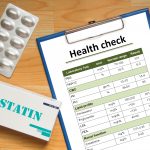
If mountain biking is your exercise of choice, go for it. A new study finds that the benefits of this sport outweigh the risks, dashing a common view that it’s always dangerous, injury-inducing and meant for thrill seekers. “Mountain biking and hiking are some of the fastest growing recreation activities in the world, so understanding the spectrum of injuries becomes paramount for effective medical care,” said lead author Paul Braybrook, a doctoral candidate at Curtin University School of Nursing in Western Australia. His team analyzed data from dozens of studies across the world that included more than 220,000 injured mountain bikers and more than 17,000 injured hikers to try to pinpoint injury types. For mountain bikers, injuries were primarily on upper limbs, mostly bruises, scratches and mild cuts. Hikers had injured legs and ankles, including blisters and ankle sprains. “Despite a common perception of mountain biking as an ‘extreme’ sport, we found most reported injuries were of low severity,” Braybrook said in a university news release. “Although there were high proportions of ankle sprains in hikers and arm fractures in mountain bikers, with one study of the latter reporting more than half suffered head injuries, highlighting the importance of a good quality helmet.” The standard for protective gear and other equipment has increased as the popularity of both sports has grown, Braybrook said. This reduces… read on > read on >


















